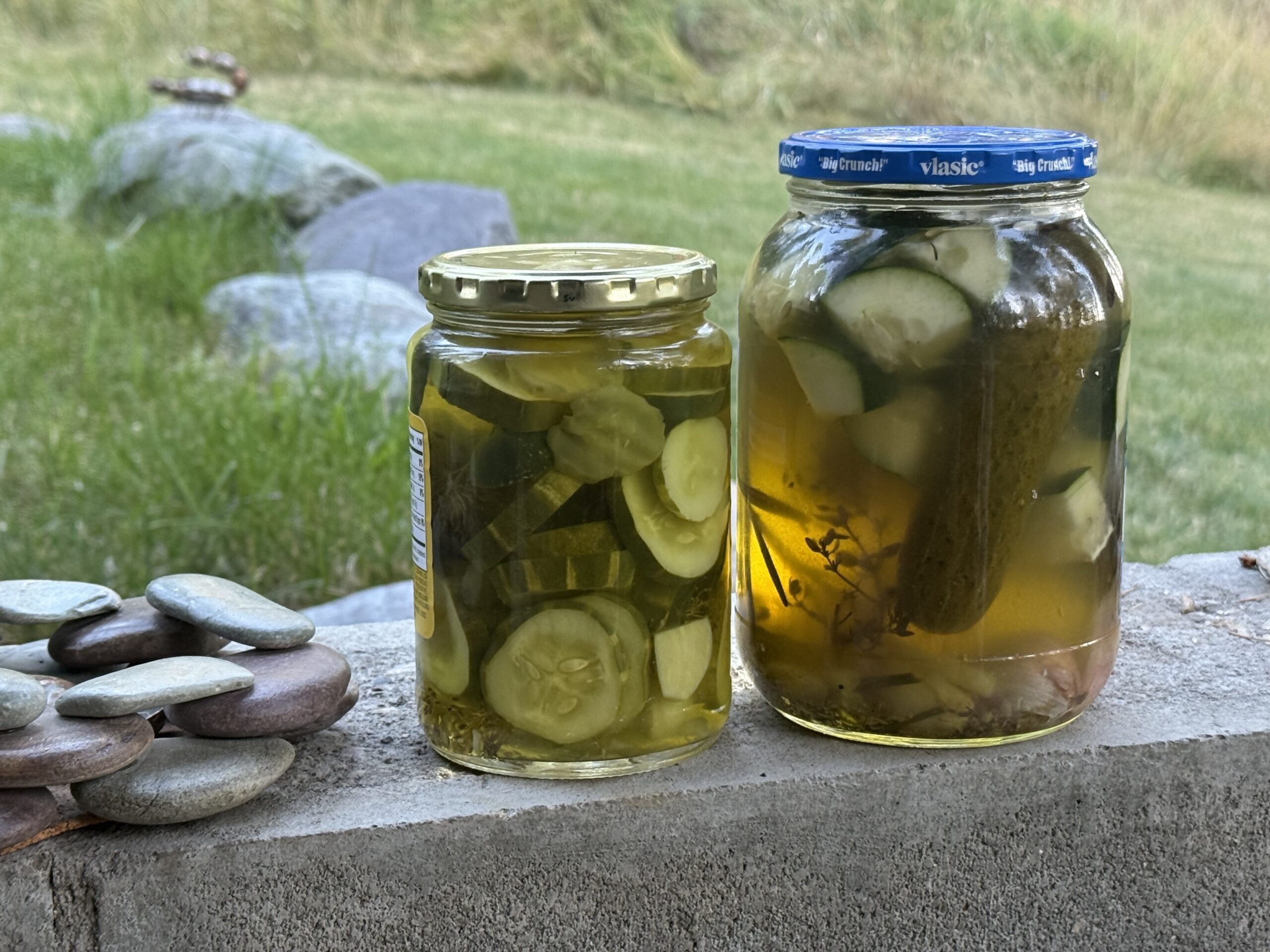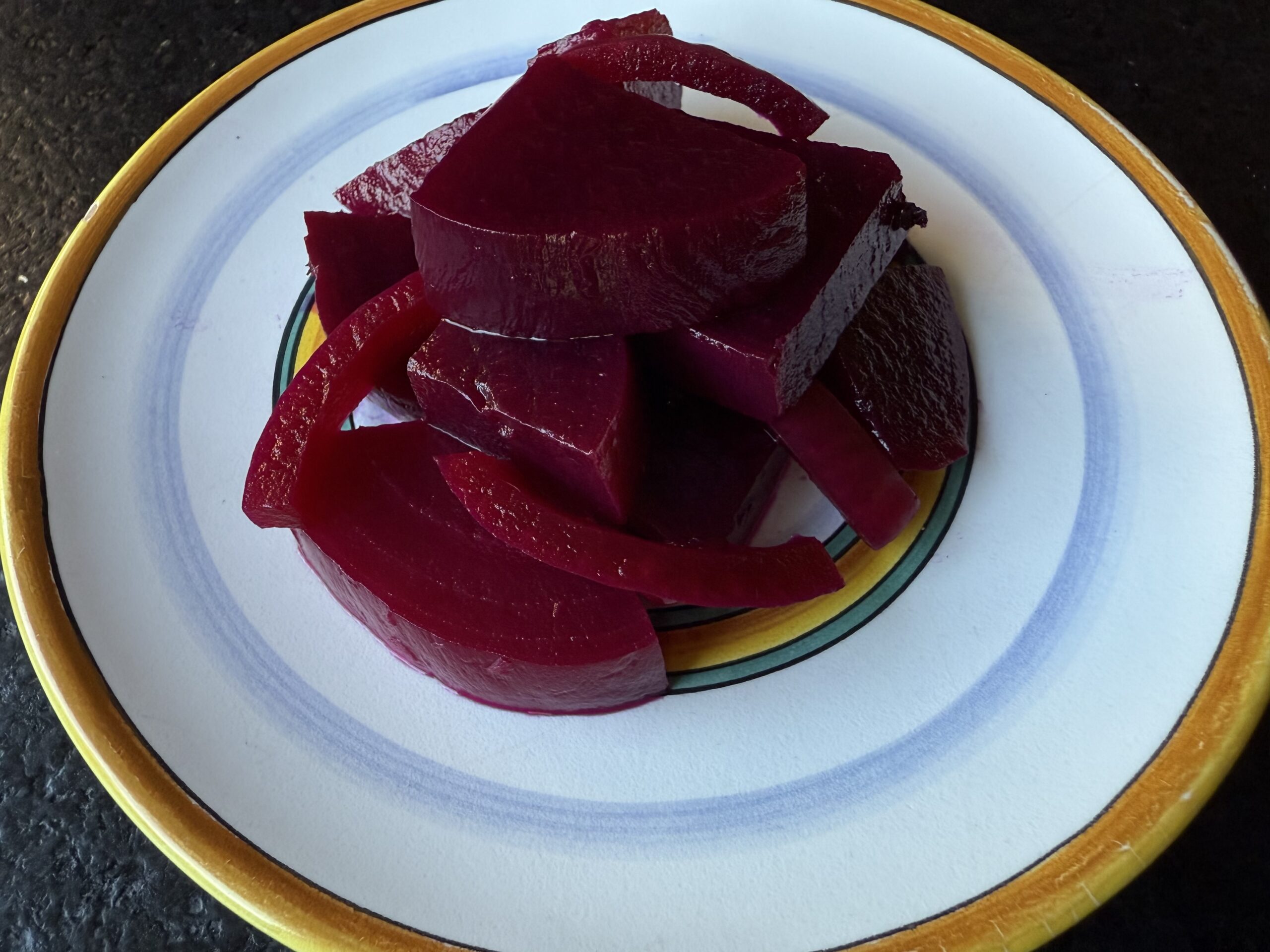

Infinite Pickle Glitch
I asked my house sitter for a shopping list, so as to leave her a properly stocked pantry. On the list was a “big jar of pickles.” I lamented not having better pickles to offer her than these soggy and leathery Navy green cucumber prunes, but when I returned home it all made sense. She had tossed the pickles themselves, and replaced them with the contents of a $5 bag of pickling cukes from the farmers market, from the guy who gives you free sprigs of dill with all your cucumber purchases. She had stuck one of those fresh seedbeds in the pickle jar as well, along with a clove of garlic from the garden.
These new pickles in old brine were bright green and as crispy freshly opened potato chips, and in the juicy crunch of each bite you could still taste raw cucumber, along with the herbal salty vinegar of the pickle brine. That was weeks ago, and that jar is still going, like an infinite pickle glitch.
It’s an example of a cooking technique called fridge pickling. While normally pickling is used as a storage technique, a way of capturing the abundance of harvest and squirreling it away for future use, fridge pickles are for immediate or short term consumption. You can skip the sterilized jars and cooking of the cucumbers, which has to be done for safety reasons with storage pickles. Thus, fridge pickles are insanely easy to make, and are of the highest quality. It’s like cheating and never getting caught, because you get to break the rules of food safety and reap the benefits of fresher, crispier pickles without paying the price of risking your health, because fridge pickles are totally safe. The only limitation is you can’t use fridge pickles to store all the bounty of summer. Unless you have some kind of infinite refrigerator glitch to store an endless array of fresh culinary pickles, you will have to follow safety protocols to make them shelf stable at room temperature.
Fresh fridge pickles are a more fluid situation. When the brine level gets too low I add white vinegar, water, sugar and salt. And I add cucumbers of any kind — big or small, slicers or picklers — replacing the cloves of garlic I eat and applying dill seed heads to maintain that dense, herbal pungency. With each bite of pickle, I’m subconsciously monitoring the salt and sweet levels, prepared to take action when they drop too low. This fall, when it’s time to make storage pickles, I know exactly the recipe I’ll use, based on the flavor I want. Other than using a mix of cider and white vinegars instead of straight white, it’s not too different from the one in the original cheap ass jar of pickles.
With my pickled beets, however, I’m not so sure. So I’ve been using the summer to experiment with fridge pickled beets, figure out what I want and don’t want in pickled beets, and optimize my recipe for my winter stash. I’m doing so because I have lived the alternative, and don’t want want to go through that again.
You wake one Saturday morning and decide, “today is the dayyyyy!” You hit the farmers market in the cool of the early morning, while the latte crowd still sleeps and it’s just you and the white-haired diehards. You bring home mountains of cucumbers, peppers, carrots, beets, and whatever other worthy materials you can find, and surf over to some blog in to figure out how to flavor them. Twenty quarts of pumpkin spiced bread and butter pickles later, you begin to wonder: what if this recipe sucks? Three weeks later you crack a jar, only to confirm that you just wasted time, money and produce on something nobody will eat.
The thing is, some of you are probably reading this and thinking “Hell yeah, pumpkin spice pickled beets!!!” It just goes to show how personal pickles are.
So as we savor the tail of summer, let’s use these long days to make some plans for those cold endless nights. Do some refrigerated research on the impacts of salty sweet vinegar on fresh produce, while you scratch that pickle itch with some infinite pickle glitch.
Pickled Red Beets with Allspice, Cloves and Red Onions
To be a serious pickler, you need to have all of the brine ingredients onhand, preferably in bulk. You can save a lot by buying vinegar in plastic gallon jugs. I don’t like listing quantities because they all depend on how much raw materials you have, and how tight you pack your jars. But a good rule of thumb is about 2 cups vinegar, a teaspoon of salt and a half cup of sugar per pound of raw beets, plus spices, which like sugar are ultimately to taste and not necessary for safety.
Ingredients
Red Beets Red Onions Whole allspice Whole cloves Cider vinegar White vinegar Salt Sugar
Procedure
Slice the beets into quarters and steam them until soft, about 30 minutes depending on size. Let them cool, and then slip off the peels with your fingers. Slice each piece into 1/2-inch thick quarter rounds.
Wash and sterilize your mason jars and lids. Add a teaspoon each of cloves, allspice and salt to each quart, or half that for pint jars. Then pack in the beets as tightly as possible without crushing them.
Depending on how well-packed your jars, you will need 2-3 cups of brine per quart. For 12 cups of brine, which will pickle 5-6 quarts, use six cups of water and three cups each of white and cider vinegars, plus two cups of white sugar. Bring the brine to a boil and pour it into the jars, leaving 1/2-inch of headspace at the top of each jar. Secure the lids and rings and process in a waterbath for 20 minutes. Remove and allow the jars to cool and seal.